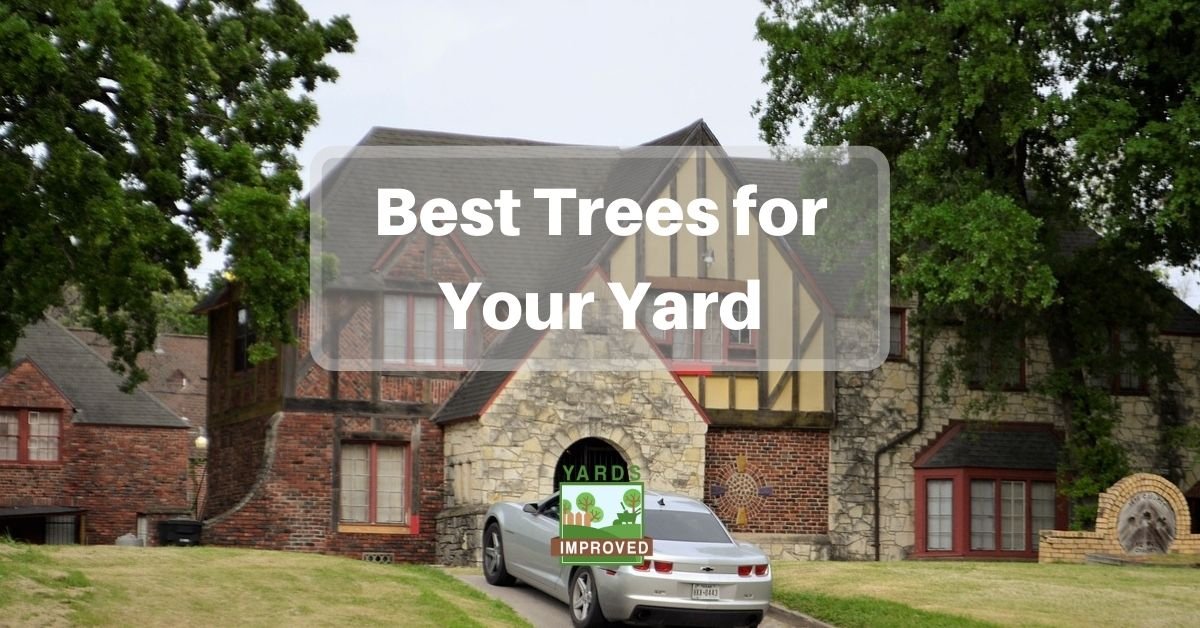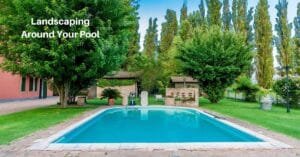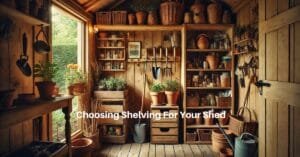Trees can bring so much to your property. They offer beauty but also so much more. But it’s important to choose the right trees for your front yard, too. They not only look good, but they can help you lower your energy bills. On the other hand, the wrong trees can become a nuisance or even a hazard. It’s possible to have great-looking trees that are also easy to maintain and even useful. Let’s look at what to consider and even some specific species that are fantastic options!
What To Consider When Choosing A Front Yard Tree
There are several factors to consider when choosing the type of tree you want to add to your yard. There is nothing that automatically disqualifies any species. Instead, they are things to consider regarding your space and how much work you need to do to maintain them.
Appearance
Of course, you want one that looks good. And this is a matter of personal taste. You may prefer certain shapes of leaves or shades of green. You might like evergreens or prefer to have the leaves change every fall. Height, width, and many other factors need to be considered based on how you want it to look.
Falling Leaves And Fruit
You’ll also want to take into consideration how hard the tree will make it to clean up your yard. With any tree, you’ll have to deal with some debris, of course, whether it’s from leaves, twigs, fruit or nuts. But some are far worse than others.
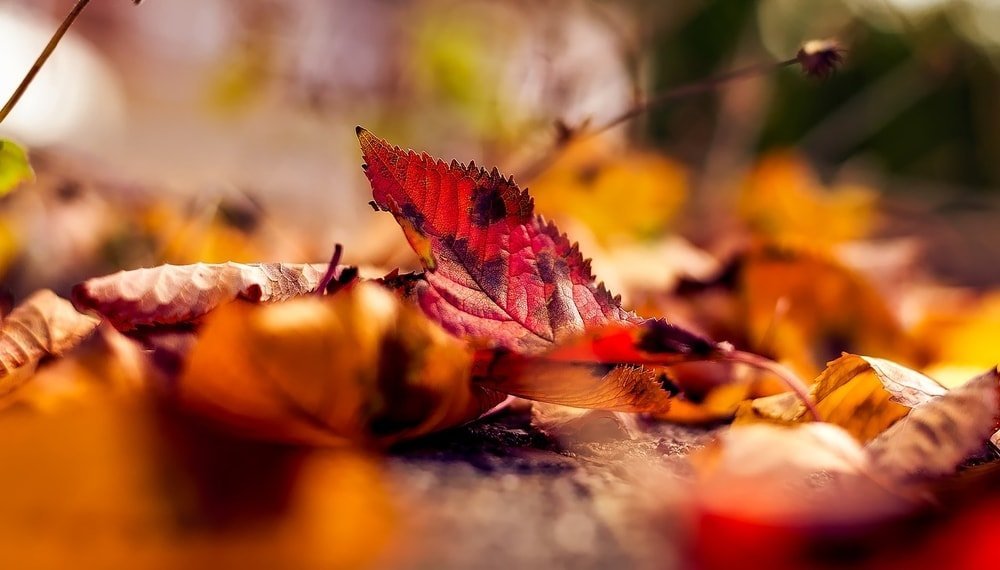
Cleaning up leaves in the fall is one issue. But some fruit-bearing trees can be even worse. You want to avoid trees that drop fruit that will go “splat” all over the lawn or driveway. Mulberries stand out in this mix. But even something like oak may become a nuisance; once acorns start to drop they can become a slip-and-fall hazard.
Choosing between deciduous and coniferous trees is a basic steps that can affect how much cleanup you have to do. Read more about the difference between the two.
Shade
Shade is another factor to consider, and it can be a two-edged sword. On the one hand, it’s nice to have some shade in the yard. It can make it more comfortable when you step outside. If the tree also shades part of your house, it can help keep your cooling costs low since the temperature inside will rise less.
On the other hand, it can be difficult to grow other plants in your yard if your tree leaves too big an area in the shade. Most grass, flowers, vegetables, and other growing plants will need sunlight to be able to prosper. You either have to choose these other plants carefully to be sure they’ll grow in shady areas, or you’ll risk having areas where nothing will grow.
Trees – or even a single tree – can help cut down on the wind that buffets your house, too. This can help save on heating costs in winter. Even trees several yards from the house can help slow the wind and reduce cool drafts inside.
Need to provide more shade for your car and keep tree sap off of it? A carport will help!
Size
It’s also important to think about how big a tree is going to grow. You should consider both how tall it will get as well as how wide. While a young tree may look great and suit the size of your yard, what will it look like in 10 or 20 years?
Many trees only reach 20 to 30 feet high, but others can reach 75 or even 100 feet. That makes them much harder to maintain. When a branch dies at 10 feet up, it’s not bad cutting it off. But if it’s 60 feet up, you need some true pros to take care of it. Of course, leaves falling from that high will spread out in a far bigger area, too.
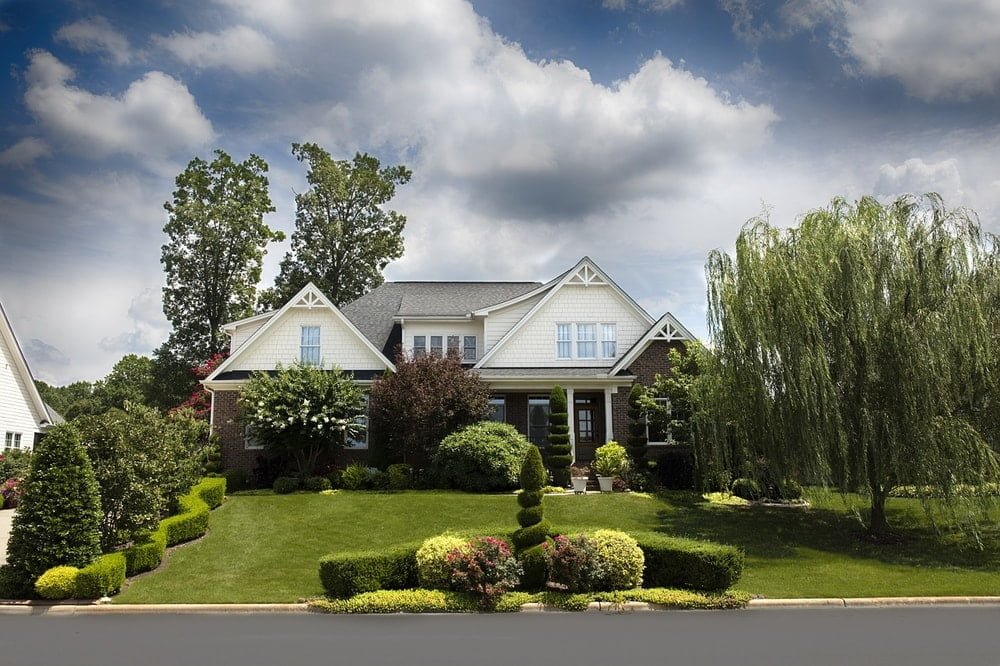
Not only do trees grow up; they grow out as well. Branches can spread to cover much larger sections of your yard than you planned. This can lead to more shade than you want. It can also mean your gutters get clogged more often or branches begin scraping the sides of your house.
No matter what kind of tree you have, your gutters need to be cleaned. Here’s how!
The size of a tree doesn’t have to be a dealbreaker. Still, it’s important to be aware of how big it will eventually get and to make your decisions accordingly.
Safety
Trees can potentially block the view of your home from the street. That brings advantages, but it can also invite trouble. You don’t want a tree to be so large that burglars can use it to hide their activity. A clear view helps keep you safer.
Roots
A healthy root system is essential for your tree’s survival. But roots can also cause serious problems, destroying the house’s foundation, causing cracks in sidewalks, and interfering with underground utilities. So it’s important to choose a tree whose root system won’t have negative effects.
Root systems that spread out just below the surface are usually the worst offenders. But there are many trees with root systems that go down rather than out. Other have smaller root systems. Of course, it’s usually larger trees that need larger root systems, so the two are closely related. Still, some trees grow to a good height and yet their roots go nearly straight down. There are also smaller trees whose roots tend to spread out.
Our Picks For The Best Trees
Fortunately, there are a lot of varieties of trees that will meet all the basic requirements. They look great, don’t get too big, and have reasonably-.sized root systems. They also only leave a reasonable amount
Of course, it’s always important to consult with a local garden center or arborist to see what grows best in your area. But we’ve selected a few of our favorites and included them here. Where possible, we’ve tried to include the scientific name since the common name can vary depending on where you live.
Crepe Myrtle (Lythraceae indica and some variants)
- Height: 15 – 25 feet
- Width: 6 – 15 feet
- Climate Zones: 7 – 9
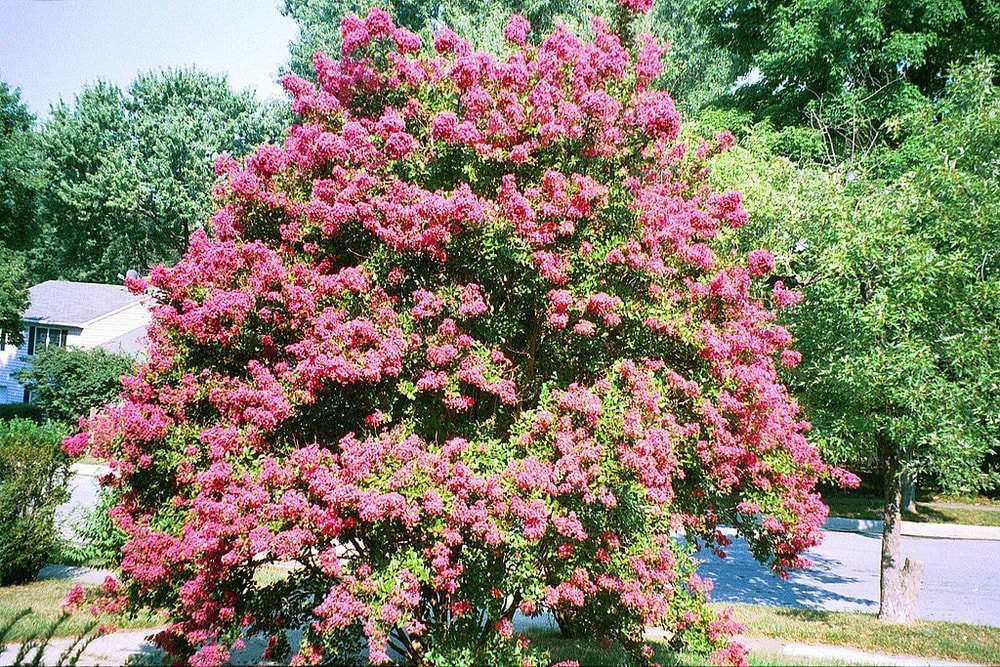
Crepe myrtle is a beautiful flowering tree that also has great-looking bark. It will flower once a year, but if you trim off the first flowers as they fade, you can sometimes get a second round. It’s a great tree for a smaller space since it doesn’t get too tall or too wide.
Chinese Dogwood (Cornus kousa chinensis)
- Height: 20 – 30 feet
- Width: 20 – 30 feet
- Climate Zones: 3 – 8
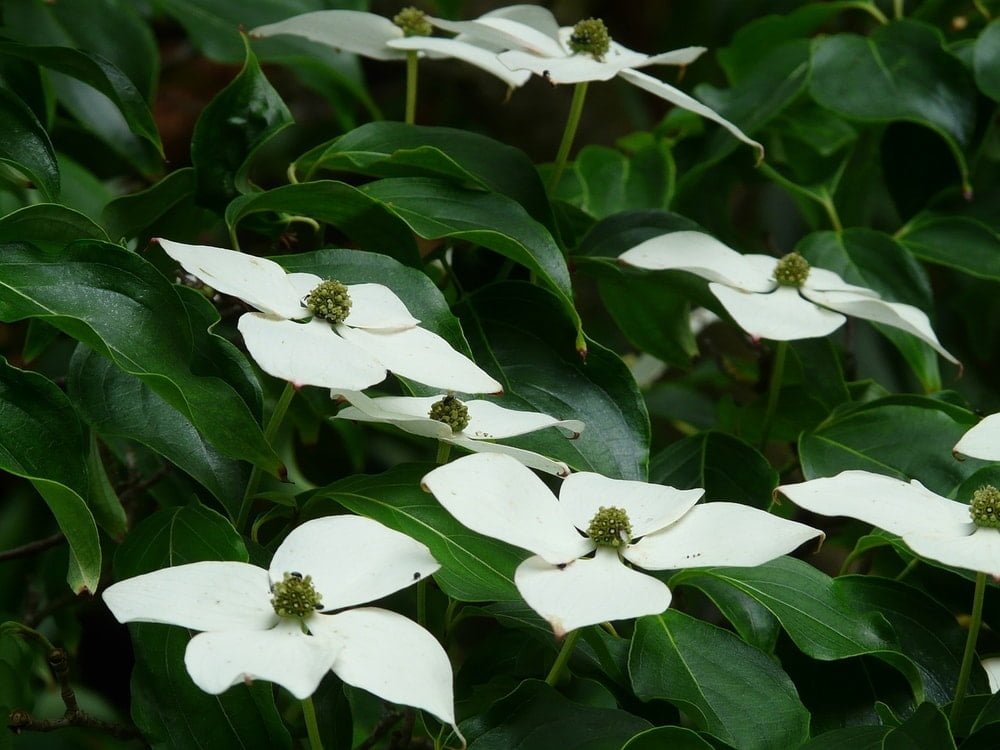
This tree is also on the smaller end of the scale. It produces beautiful flowers in the late spring, and fruit from mid-summer to early fall. It thrives in partial shade or full sun but does need a lot of water to stay healthy.
Sugar Maple (Acer saccharum)
- Height: 60 – 75 feet
- Width: 40 – 50 feet
- Climate Zones: 3 – 8
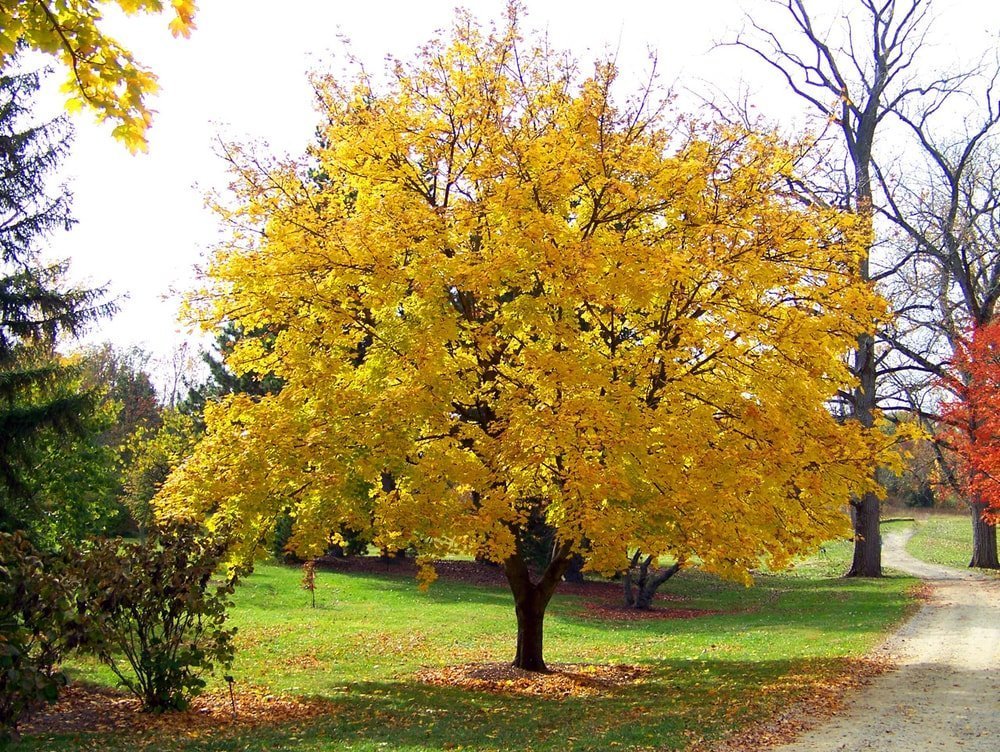
The sugar maple’s leaf shape is famous, being featured on the Canadian flag. It also offers some of the most brilliant fall foliage you can imagine. The leaves turn bright yellow, burnt orange or even red before they fall. It’s beautiful all year but you just can’t beat what it offers in the autumn.
Smoke Tree (Cotinus coggygria)
- Height: 10 – 15 feet
- Width: 12 feet
- Climate Zones: 5 – 8

A smaller tree, the Smoke Tree offers a unique color that will stand out all summer long. Its smoky pink flowers show up for summer. The leaves are a blue-green but turn to purple, yellow, and red in fall.
Saucer magnolia (Magnolia x soulangeana)
- Height: 20 – 30 feet
- Width: 25 feet
- Climate Zones: 4 -9
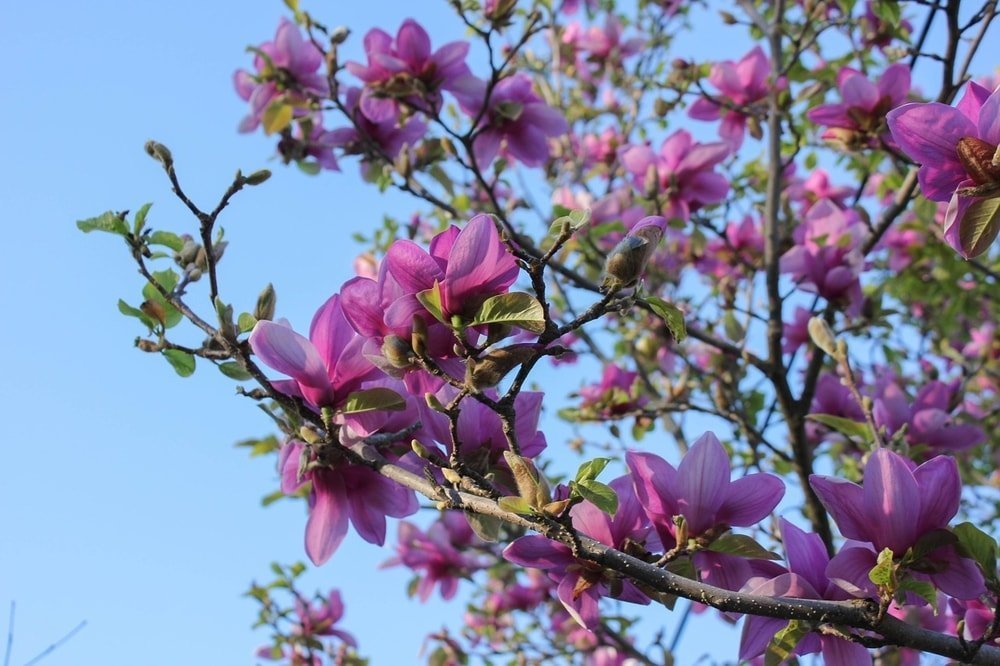
The saucer magnolia is a popular and somewhat unique tree. The uniqueness comes because the wonderful pink and white flowers sprout in spring before the leaves. The leaves then follow and remain on the tree through summer into early fall.
Northern Red Oak (Quercus rubra)
- Height: 60 – 70 feet
- Width: 40 -60 feet
- Climate Zones: 3 – 8
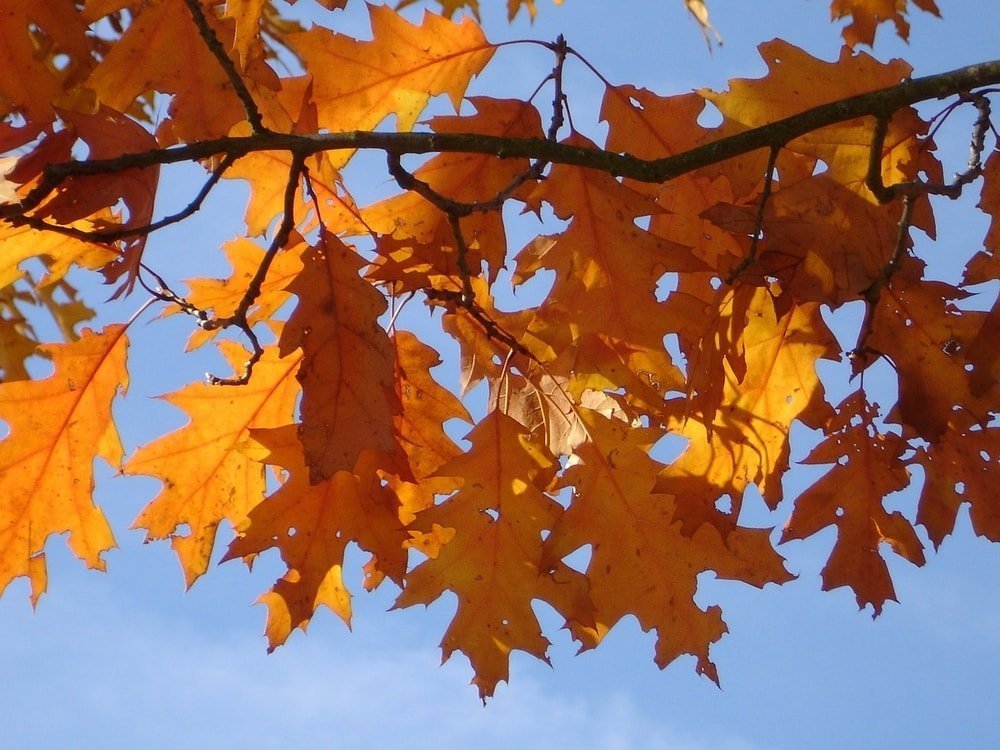
Also known as champion oak, this tree grows tall and wide and can easily live over 100 years. In fact, one has been documented to have lived 326 years! The leaves are dark green on top and a lighter green below and in fall turn brilliant yellows and reds. It takes about 18 months for the acorns to mature; while they can be an inconvenience, they do make good food for wildlife.
Blue Spruce (Picea pungens)
- Height: 50 – 75 feet in the wild, but rarely more than 50 feet in gardens
- Width: 10 – 20 feet
- Climate Zones: 2 – 7
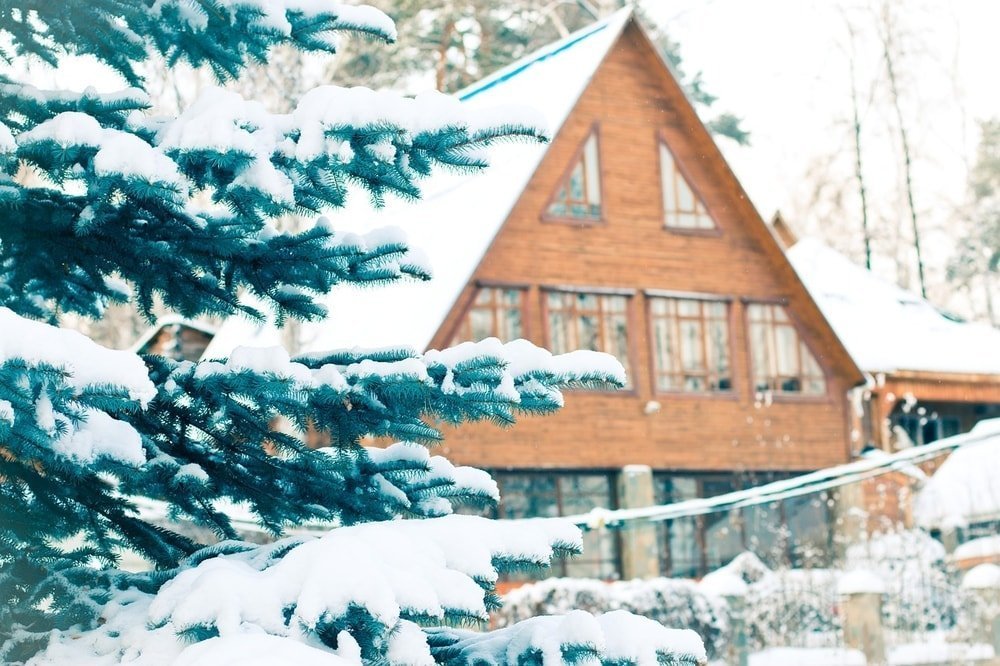
Sometimes you might not have a lot of space but would still like a tall tree. The blue spruce is a great fit! This evergreen is also one of the most popular species used for Christmas trees. It also grows pinecones that reach about 4 inches. And it also offers that great spruce smell!
Looking to put those pinecones to good use? There are many crafts you can do, but it all starts by cleaning them!
Japanese Flowering Cherry (Prunus x yedoensis)
- Height: 15 – 40 feet
- Width: 25 – 40 feet
- Climate Zones: 5 – 8
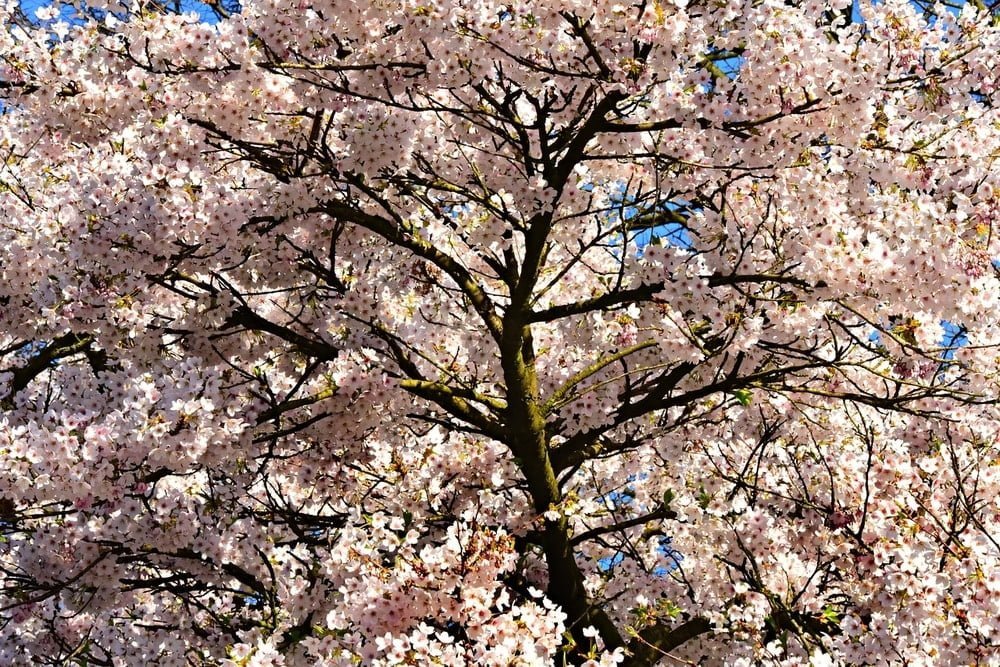
The cherry tree is so beautiful that it is a tourist attraction in Washington, DC during the blooming season. Blooming in late winter or early spring, its beautiful pink and white flowers are a great way to welcome the end of the cold season.
Arborvitae (thuja)
- Height: 40 – 50 feet
- Width:10 – 20 feet
- Climate Zones: 2 – 7
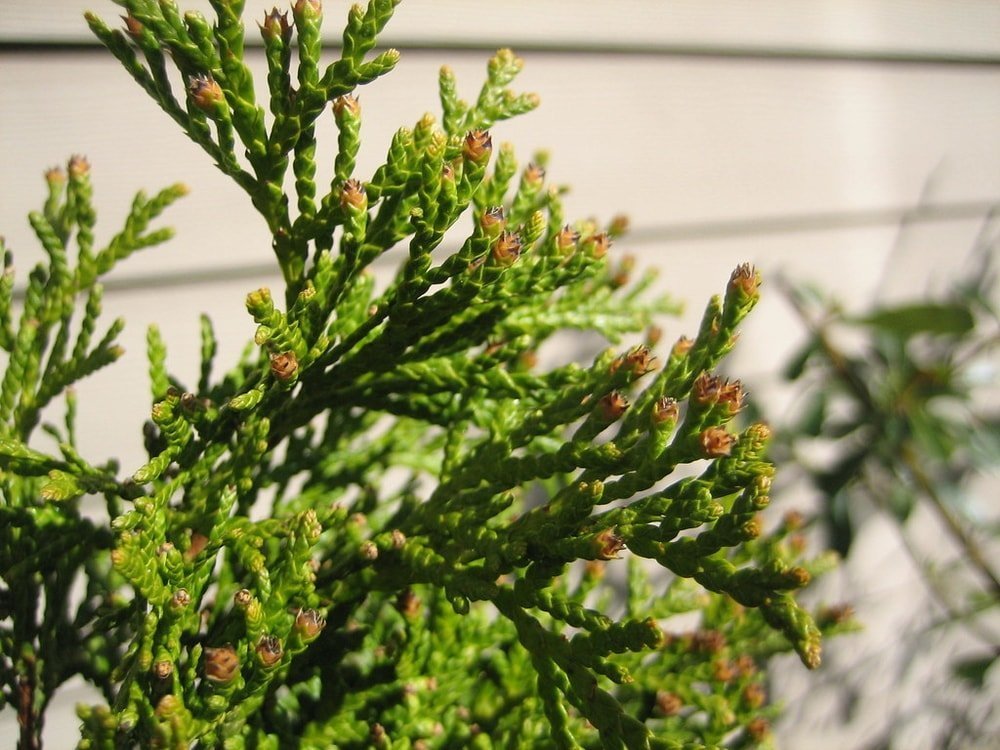
Another evergreen, arborvitae can grow tall but is relatively narrow. It can be trimmed to keep it to a manageable size and preserve a good shape, too. It’s an impressive tree year-round, and it can serve as a great windbreak when planted in a row.
Eastern Red Cedar (Juniperus virginiana)
- Height: 40 – 50 feet
- Width: 8 – 20 feet
- Climate Zones: 2 – 9
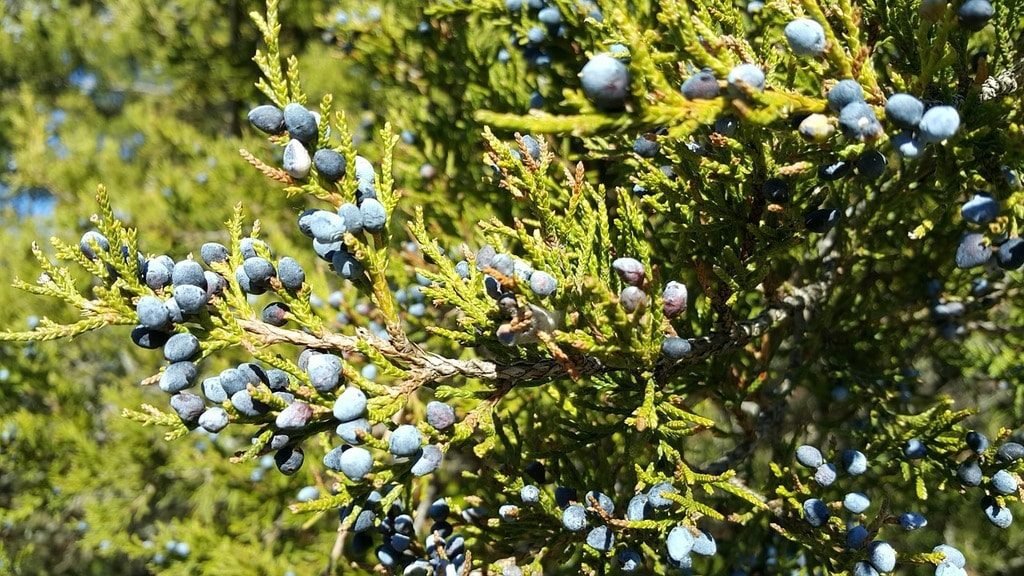
Part of the juniper family, this is another evergreen. It’s commonly used as a Christmas tree in parts of the Ozark Mountains. Its branches start close to the ground. It produces small blue or black cones that look more like berries.
Fig (Ficus carica)
- Height: 10 – 30 feet
- Width: 15 – 30 feet
- Climate Zones: 7 – 11

If you want a fruit tree in your yard, the fig is one good way to go. Its large leaves measure up to 10 inches long. It does produce flowers, but they’re tiny and not noteworthy. But it will produce fruit eventually. The tree does tend to droop as it grows and you’ll have to trim it.
Conclusion
Adding one or more trees to your yard adds to your curb appeal and can also provide the benefits of shade and protection from the wind. But it’s important to choose wisely so that your trees won’t outgrow their home and won’t damage your hardscaping or buried utility lines. Even taking these cautions into account, there are many fantastic types of tree available to provide color and shade for your home!

